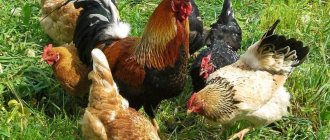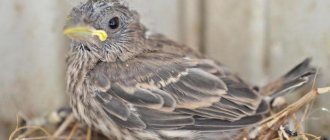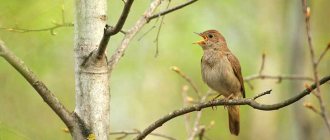The Indian duck is a bird of the Anatidae family, vaguely reminiscent of a mute swan. This bird has valuable meat and eggs with high nutritional value. Breeding indo-ducks is quite a profitable activity, provided the correct approach to keeping animals is used.
At what age do Indian ducks lay eggs? Everything here is individual. In particular, this depends on the climate in a particular region and on the microclimate that is maintained in a particular room, as well as on the length of daylight hours.
Muscovy ducks have always been considered good brood hens, so purchasing an incubator is usually not necessary. However, a novice poultry farmer may have problems with brood hens, because some birds have to be specially trained to hatch eggs. How to do this can be found in specialized literature. You can also take advantage of advice from experienced farmers .
What time does an Indian duck lay eggs?
An Indian duck is considered sexually mature at about six months of age, or approximately 200 days from birth. However, fluctuations in a smaller or larger direction are allowed, depending on the conditions in which the bird was kept. It is worth saying that the Indian duck prefers warm places, and if this wish is fulfilled, then with a high degree of probability the bird will lay eggs earlier than usual. Otherwise, if it is cool in the house or there is a draft, then you will have to wait 1-2 months longer for the first clutch.
As for when eggs are laid, the time of year will depend on many factors. The age of the bird is considered the most significant:
- If the bird is not laying eggs for the first time and is not young in age, then most likely the laying will occur at the end of winter - in the spring.
- If we are talking about a young bird, then the first eggs should be expected at the end of spring (March) - beginning of summer (until July), sometimes later.
There are also differences in the time the eggs are laid. When do Indian ducks lay eggs? If an ordinary domestic duck lays eggs at any time, then the physiology of Indo ducks works in such a way that the process usually occurs in the early morning and can last until lunch.
There are two periods for laying eggs: autumn and spring (in winter this happens extremely rarely). Spring and autumn laying lasts about 2 months. To stimulate the process and make sure that the birds lay eggs as fertilely as possible, you can add special fortified supplements to the food and create normal living conditions. It is worth considering that the listed measures may not always justify the result obtained, because one clutch does not contain so many eggs.
Possible problems
The Indian duck lays eggs well. However, sometimes she, being at a certain age, refuses to sit in the nest. There are also birds that have stopped laying eggs for unknown reasons. Often the reason that a bird refuses to sit in the nest is the presence of parasites in it. Sometimes she simply doesn’t like the nest equipped by the owner, which is why several nests are built in the house, placing them in different places.
The Muscovy duck does not like human interference; it is worth approaching the nest to collect food. After the bird’s maximum egg-laying period has ended, as well as during periods close to winter, it is not worth taking eggs from the nest every day. They should sit for several days. The straw does not need to be changed or adjusted daily.
Noise is another reason why birds abandoned the nest. If they rushed well before, then they continue to do it just as well after, only in a different place. To find it, you will have to watch the bird for several days. The noise forces her to leave the nest even while the chicks are hatching. A decrease in egg production has also been observed recently before molting. During molting, the stock does not lay eggs.
Birds that lay eggs well do not always become good hens. Sometimes those individuals that laid much worse eggs turn out to be more caring mothers. This is explained by the fact that everyone’s maternal instinct is developed differently. If a caring hen is found on the farm, she is left the next year, placing eggs laid by other individuals in the nest, taking into account that not every egg laid by the bird is fertilized. It is first scanned to determine whether there is an embryo there or not.
How many eggs in one clutch
Indian ducks live a long time; they can be called the longest-livers among poultry. If we take the average value, they can live up to 20 years, but eggs can only be taken from them in the first 6-7 years. As for performance indicators, the Indian duck shows its maximum in the second year of active egg production. In the future, the indicators will fall every year by an average of 7-10%. Thus, if an Indian duck does not meet expectations for the number of eggs in the clutch and does not lay as well as the owner expects, you should not give up on her and cull her, perhaps she has not reached the age at which she will lay the required number of eggs.
Naturally, in order to fertilize the eggs of the Indian duck, males must also be kept on the farm. They are being bred in parallel with females. Typically, their density should be in the following ratio: one male per 4-5 females.
How many eggs does an Indian duck lay per year? The number of eggs, how many eggs one turkey lays in a calendar year, is from 80 to 140. Many farmers claim that this can be a fairly profitable business.
Productivity indicators
The egg production rates of musk ducks are never stable, as they are influenced by the following factors:
- Age and health of the bird.
- Living conditions.
- Quality of feeding.
- Lighting level in the poultry house.
- Season.
See also
Description and characteristics of Red Bull Indo-ducks, breeding and careRead
At six months, a duck lays no more than 8 eggs, and at 8 months their number doubles. At 9 months, Indian ducks lay up to 22 eggs, at 10 months there are already 25. After this, a decrease in indicators begins, that is, after a month the number of eggs decreases to 22, and by the year it returns to the level of eight months - 16 pieces.
When productivity indicators decline, such eggs are not used for breeding, and the turkey ducks themselves are often sent for meat. Since duck eggs are used for food in small quantities, it is unprofitable to keep hens for longer than 10-11 months. On average, a musky duck is capable of laying up to 100 eggs in 365 days; record holders increase this figure to 120 and even 140. The weight of the egg reaches 60-70 grams, the incubation period lasts from 34 to 37 days.
Do I need an incubator for eggs?
One turkey egg weighs about 70 g, and in appearance it is significantly larger than a chicken egg. The color of both products is similar, since both are painted white. However, in the product supplied by birds, bluish inclusions can often be seen. The egg is oval in shape, slightly blunt at one end.
Since the females of this poultry are good brood hens, the percentage of eggs hatched is quite high. On average, they talk about 10-15 hatched chicks. Therefore, you can start breeding an egg not only in an incubator, but also in a natural way: using a hen and a nest. This will significantly reduce material costs and save space.
Speaking about a relative of the duck, it is impossible to say exactly how long the hatching of the offspring will last, since this depends on many factors. On average, this lasts about 30-40 days, which is how long the mother should be left with the chicks.
How to feed a duck correctly to increase egg production
A good diet is the key to a large amount of egg production, and this does not depend on the age group the female belongs to. The older the bird gets, the fewer eggs it will lay, but you can maintain this stage a little and prevent it from deteriorating with the help of good food, namely:
- ducks need green matter. It is best to release birds onto pastures containing alfalfa, clover and similar meadow plants. But if this is not possible, then the green grass is mowed and distributed at the walking area. Tops from the garden can serve as an additional variety to the diet;
- excellent food - various grain mixtures, which include wheat and barley; for better absorption, grain can be soaked in water;
- ducks will not refuse peelings of carrots and potatoes;
- Thanks to special vitamin supplements, you can also increase egg production. True, they were created specifically for the egg sector, and therefore may not work as well as expected on meat poultry.
We invite you to join our Zen channel and group on VKontakte or Odnoklassniki, where new articles are published, as well as news for gardeners and livestock breeders.
Similar articles:
- Raising musk ducklings, how to get a healthy and strong bird?
- Breeding Indian ducks naturally, what problems may arise?
- How to incubate turkey eggs?
Setting up a poultry house for an Indian duck
Despite the fact that the Indian duck is considered an unpretentious bird, you need to take care of decent conditions in the poultry house. If you provide silence and warmth, then poultry will be able to lay more eggs. It is necessary to take into account that the nests of other birds should not be located in close proximity to the nests of poultry. The fact is that an Indian duck can give up hatching.
The most important thing is that the place where the eggs are hatched is warm. The simplest thing you can do is place the hen in a cardboard box. You need to put a bedding of hay on the bottom to keep the eggs warm.
The issue of nutrition is also important. A well-fed hen will be able to incubate her brood better. Compound feed with the addition of corn or grain is ideal for nutrition. The poultry house must have constant daily access to clean drinking water. The container should be deep enough for the bird to bathe there. You can also wash freshly laid eggs in the same water to wash off the specific film from them. It is necessary to create such conditions that there is no noise and dust near the place where poultry are kept.
What you need to know about nesting sites
The breeding itself will depend on choosing the right place. In the poultry house you need to choose a quiet, secluded corner where no one will disturb the female during laying. In the uterine part, houses are installed according to the number of queens and are separated from each other by removable partitions so that the birds cannot communicate with each other. This precaution is not a waste of time: some hens may hatch their chicks a little early (it is still impossible to get broods at the same time), then other birds will simply leave their nests with unhatched eggs.
A special requirement is placed on the room: a certain temperature regime must be maintained here. As for nesting houses, they can be made of cardboard boxes or plywood. The last option is considered the most convenient, because... The nests can be used for several years. The bottom is covered with high-quality hay or straw to keep the ducklings warm.
Nest house option out of the box
As laying approaches, it is necessary to provide the bird with a high-quality diet. As a rule, dry food and various grain mixtures are used. The breeding stock is given a walking area with growing grass, which is separated from the rest of the birds.
It is important not to forget about water containers. In the warm season, it is recommended to install large basins in which females can take water procedures. A moistened feather, in contact with the eggs, will wash away the film from the shells and thus normalize gas exchange processes. If for some reason the ducks cannot be provided with bathing suits, then it is recommended to spray the nests daily with water from a spray bottle.
Extraneous noise will begin to disturb the ducks, and then they will leave their nests. It is necessary to refrain from carrying out work that involves loud sounds, at least until the nesting period is over.
Why doesn't the Indian duck hatch eggs?
Even if the bird was laying eggs, a situation may arise in which it refuses to hatch. Why is this happening? This can be influenced by many factors:
- It is not recommended to take eggs from the hen too quickly.
- Parasites have entered the masonry site.
- Perhaps there are rats in the poultry house.
- Too young or, conversely, mature bird.
- There are no normal conditions of detention.
Naturally, if every defect of maintenance at home is corrected, the problem will be eliminated in the shortest possible time. You can also try to trick the bird. To do this, you need to lay the eggs in the place where the Indian duck usually rests; sooner or later she will certainly sit on the nest.
It is also worth mentioning that a duck can throw eggs without looking at them for a while, that is, stop hatching them and go for a walk. This is normal, because short-term cooling of eggs is normal. It is important that the walk does not last longer than 1 hour, after which the female should sit back on the perch.
Conditions for the birth of ducklings, what to do next
During the incubation process, the female musk duck moistens the shell with water, turns it over and throws out the unusable eggs, and cleans off the top layer of the shell for better gas exchange. Newborn chicks are left with their mother or taken into the house.
Day-old baby ducklings do not know how to eat and drink. It is necessary to crumble the hard-boiled egg yolks and sprinkle them on the backs of the ducklings - the rolling crumbs attract the attention of the chicks, and the kids peck them off. If unsuccessful, the chicks are fed from a pipette.
Feeding scheme:
- 1st day - 5-6 times;
- 2-7 days - 4-5;
- 7-30 days - 3-4 times;
- starting from one month of age - 2-3 meals a day.
To feed newborn babies, just put their beaks in a bowl of water, and they will understand that they need to drink.
Muscovy duck nest
For children who do not stay with their mother, well-lit, warm boxes are made. For 1 sq. m there should be 15-16 ducklings.
Humidity - 65-70%, temperature for the first 5 days - about +30 ° C. From the 6th to the 10th day the temperature is reduced to +23...+24 °C, from the 16th to the 20th day - to + 18…+22 °C. Grown-up ducklings are allowed into the house and cared for like the rest of the flock.
How to spot a good hen
A good mother has a calm, but not lethargic character . It is better not to involve aggressive individuals in hatching. If the expectant mother behaves ideally, she is still tested at least on dummies.
A caring female will leave the nest to feed, rinse herself and hurry back to the clutch, which, by the way, should fit entirely under her.
Important! If an Indian duck has left her usual place and is in no hurry to return (for example, she has left the poultry house for fresh air), you should not trust her offspring.
Features of incubating eggs of an Indian duck
What is the normal number of eggs that a given bird can hatch? - no more than 20 pieces. If for one reason or another there is a larger number in the clutch, it is worth taking the extra ones, although a slight fluctuation up or down is allowed, depending on the size of the eggs.
It also happens that a bird does not lay all its eggs at once. Then you need to mark those that appeared first in order to separate them from the laying hen first. It is necessary to promptly dispose of those eggs that have one or another defect. This could be a crack, an abnormal color, or contamination from droppings. If the bird in question does not stop hatching, there is a high probability that the defective egg will decompose and expose all offspring to death. There is no point in waiting for the outcome without intervention.
The temperature for storing eggs in an incubator, if you choose this method of storing eggs, should be about 10°C, but they can be stored in such conditions for no more than 10 days. It is necessary to handle the masonry as carefully as possible so as not to damage them and then subject them to further hatching, if necessary.
Feeding issue
The basis is corn, which birds eat with particular passion. You can mix macadamia (in small quantities), fodder beets along with tops. Leftover food from the kitchen will also work. You can supply sprouted barley and wheat. It is sometimes useful to add fish and meat and bone meal, eggshells.
Cabbage is good during the molting period. Greens can be brought from the mowing, but direct access to the pasture is better. There is no need to graze them on purpose; they do it on their own. This distinguishes them from ordinary geese.
Muscovy duck diet per head
| Feed | Season | |||
| Winter | Spring | Summer | Autumn | |
| Wheat | 30 g/day | 60 g/day | 30 g/day | 10 g/day |
| Barley | 20 g/day | 20 g/day | 30 g/day | 20 g/day |
| Oats | 20 g/day | 20 g/day | 20 g/day | 20 g/day |
| Meat and bone meal | 10 g/day | 15 g/day | — | — |
| Hay flour | 20 g/day | 15 g/day | — | 30 g/day |
| Beet | 20 g/day | — | — | 30 g/day |
| Potato | 30 g/day | 40 g/day | — | 60 g/day |
| Silage | 20 g/day | 20 g/day | — | — |
| Mineral supplements | 8 g/day | 12 g/day | — | 5 g/day |
| Salt | 1 g/day | 1 g/day | — | 1 g/day |
| Wheat bran | 15 g/day | 30 g/day | — | 10 g/day |
| Total: | 194 g/day | 233 g/day | 88 g/day | 186 g/day |
Birds love to splash in the water and peck sand. We must ensure that these products are available in the access area. It is advisable to ensure that the birds do not swallow anything dangerous or sharp with the sand; it is better to limit the entry of such debris into the yard. The Muscovy duck is very profitable - it eats little, grows steadily, and lays eggs well.
Eggs hatching
You can tell that the hatching time is coming to an end by the characteristic cry that the female makes before the chicks hatch. This usually happens on day 25. At this time, you need to provide the bird with maximum peace. After 3-5 days you can check whether the chicks have hatched from the eggs. If this is not done in time, then there is a possibility that the female may peck her own cubs. Under no circumstances should you break through the shell yourself.
It often happens that not all chicks hatch at the same time; this may happen after some time. In this case, you urgently need to take the chicks from the bird and give it the opportunity to hatch those who remain. The owner must ensure that the place where the little chicks are kept is also warm and has all the necessary equipment for feeding and watering the birds.
Last days of hatching
A few days before the chicks hatch, the hen begins to make sounds. From the 25th day, it is necessary to create a calm environment and the hen should be left alone so as not to drive her away from the nest. After 30 days of incubation, you can check the presence of chicks in the nest. Helping chicks get out of their shells is not allowed.
After the babies are born, the clutches are taken to a pre-prepared place in the house with food. This is due to the fact that the babies appear one after another and the mother duck can forget about the unhatched ones and begin to care for the young ducklings. Then the entire brood is returned to the mother hen.











